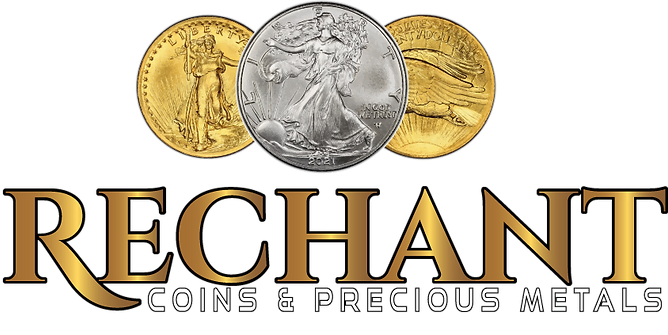PCGS vs NGC Ultimate Coin Grading Guide
In the sphere of coin collecting, discerning the precise condition of a piece is pivotal, often casting a profound impact on its market value and appeal to collectors. This realm experienced a transformative shift with the inception of independent grading services, which introduced a unified, unbiased approach to evaluating numismatic treasures.
Initially, the reliance on personal judgment gave way to a new standard of reliability and uniformity with these expert analyses.
The establishment of the Professional Coin Grading Service (PCGS) in 1986 marked a significant milestone, heralding a widely accepted grading standard that resonated throughout the industry. PCGS not only provides essential services such as verification of authenticity and coin encapsulation but also offers a detailed grading scale that has become a touchstone within the numismatic community, aligning with standards set by the American Numismatic Association and rivaling those of NGC to help collectors determine coin grades accurately.
Understanding Coin Grades
Venturing into the realm of numismatics requires a discerning eye for detail, particularly when evaluating a coin's condition, a cornerstone in determining its market value. The widely accepted grading standard in the numismatic community utilizes the comprehensive 70-point Sheldon Scale, with each step marking a distinct state of preservation ranging from poor to perfect uncirculated.
A coin's luster is a telling indicator of its history, with minimal signs of circulation often commanding higher rankings on this meticulous scale.
Grasping terminology such as uncirculated is essential for collectors, as it signifies a coin that shows no evidence of wear from public use, reflecting a pristine mint state.
By closely inspecting features like the rim and the high points for signs of contact, enthusiasts can deduce a coin's journey through time. The term proof is reserved for a specific minting of coins that exhibits a high standard of luster, exceptional eye appeal, and a sharpness of detail that surpasses typical uncirculated coins, often with a mirrored surface not seen on regular mint state issues, distinguishing it as a numismatic item of particular interest to collectors who value the fine qualities of the rim, high points, and lettering.
Basics of NGC and PCGS
The world of coin collecting is enriched by the existence of impartial grading services, which are vital for both collectors and dealers. These services, provided by organizations such as the Numismatic Guaranty Corporation (NGC) and Professional Coin Grading Service (PCGS), offer objective evaluations that have come to be highly esteemed within the numismatic sphere.
This ensures a standardized basis for appraising the value of a coin, an approach that has earned the recognition of the American Numismatic Association and similar institutions.
When NGC and PCGS emerged in the numismatic scene during the 1980s, they ushered in a revolutionary phase of improved coin assessment.
Their systematic approach to examining factors like mint luster, hairline scratches, variations in tone, and the overall state of a coin brought about an unprecedented clarity in grading. By providing detailed designations for coin grades which factor in the Sheldon scale, the American Numismatic Association helps collectors determine the mint luster, tone, and presence of hairlines on coins, such as if a dime at MS-60 possesses the expected sheen on the highest points of its design.
Numismatic Grading Standards
In the realm of coin collection, the quality of each piece is crucial, as it defines both its rarity and potential for appreciation. Assessing the condition of these coins is underpinned by precise grading standards, pivotal for numismatists when evaluating their worth.
Attaining the highly sought-after MS-70 grade is an indication that the coin has attained the summit of flawlessness, with not a single post-minting blemish to be found, even under close scrutiny.
In contrast, a coin awarded an extremely fine (EF or XF) rating suggests the presence of only the most minimal trace of wear, primarily on the highest points of the design, and reflects a degree of handling less than that which defines perfection. MS-65 coins encapsulate an excellent state of preservation that sets them apart, where any imperfections are minor and limited to only a trace of wear on the highest points of the design, making them extremely fine and desirable among numismatists.
Deciphering Coin Grading Guides
The delicate task of assessing the condition of currency is a cornerstone in the realm of numismatics, directly influencing the rarity and desirability that dictate a piece's market worth. Established numismatic authorities and grading services offer standardized evaluations that contribute to the consistency of coin trades.
A widely recognized grading scale is in place, ranging from 'poor' to 'perfect uncirculated' status.
At each level, the assigned grade embodies a set of detailed criteria based on the coin's wear, as well as the number and placement of contact marks.
The distinctions are particularly nuanced within the Mint State category, where minor variations can lead to substantial differences in valuation.
Integral to the community are third-party grading services, providing not just an expert opinion on the condition but also secure encapsulation to preserve the coin's condition. Collectors rely on this certification to verify the authenticity and quality of uncirculated coins, which are graded on a specific scale that assesses factors such as contact marks and overall condition, with grading services often providing a third-party grading at coin shows to assign a grade that helps to accurately gauge and add coins to their collection.
Key Aspects of Coin Grading
- Numismatic grading scales range from 'poor' to 'perfect uncirculated', affecting a coin's market value.
- Grades reflect wear and the presence of contact marks, with even minor differences impacting a coin's worth.
- Third-party grading services provide expert evaluations and encapsulate coins to maintain their condition.
- Certification by these services assures collectors of a coin's authenticity and quality.
The Anatomy of Coin Grades
Exploring the fascinating realm of numismatics, one quickly discovers how vital meticulous grading is to the valuation and safeguarding of collectible coinage.
Beginning with the **Understanding the Basics**, the practice of determining a coin's condition—the cornerstone of numismatics—is what defines its economic value.
Grades span a spectrum from 'Poor' to 'Mint State', highlighting the fact that even the slightest wear can significantly alter a coin’s worth.
Proof coins stand at the zenith of this spectrum, boasting no signs of wear and gleaming as if freshly struck from the planchet.
In **Dissecting the Grading Scale**, it is clear that this system isn't haphazard—it's structured around the Sheldon Scale, an esteemed metric created by Dr. William Herbert Sheldon. This standardized scale meticulously assesses the condition of coins ranging from circulated examples with slight wear to proof coins, taking into account factors like the planchet quality and any visible wear, to ensure that each coin's grade reflects its true condition as created by Dr. Sheldon's scale, which is often utilized by grading services such as NGC's system for evaluating various coin types.
Mint State vs. Circulated
The intricate details that define a coin's grade can dramatically affect its allure and market value to numismatists.
Being at the apex of the coin grading spectrum, 'Mint State' denotes those specimens that retain their untouched, impeccable condition, analogous to how they appeared upon departing the original mint - unblemished by the passage of time.
Conversely, circulated coins have been infused into the economic stream and exhibit typical signs of wear from their utilitarian role.
The importance of these distinctions cannot be overstated within numismatics, as both the financial and historical significance of United States coins are greatly determined by their preservation level.
Delving into the coin grading process is a pivotal step for enthusiasts and investors alike. The universally accepted Sheldon Scale, which operates on a continuum from 1 to 70, provides a basis for this evaluation; with the lowest grade denoting a coin that is barely recognizable, to the highest scores signifying an XF (Extremely Fine) piece with exceptional eye appeal, crucial in the coin grading process, especially for toned United States coins that were once in circulation and retain their original mint luster, often assessed by third-party grading services like NGC and PCGS.
Key Points on Coin Grading and Value
- Mint State coins are in the same condition as when they left the mint, with no signs of wear, enhancing their value and collectibility.
- The Sheldon Scale, ranging from 1 to 70, is the standard for determining a coin's grade, with higher numbers indicating a coin in better condition.
- Coins graded as Extremely Fine (XF) have excellent eye appeal and are especially valuable when they maintain their original mint luster.
- Professional grading services, such as NGC and PCGS, are often utilized to assess and certify the grade of coins, providing credibility and trust in the coin's listed grade.
The Sheldon Scale Explained
Exploring the intricate world of coin collecting, one quickly encounters the critical role played by the meticulous evaluation of a coin's physical state. This evaluation not only determines a coin's market value but also its place in the annals of history. The numerical system first devised for large cents, known as the Sheldon Scale, was introduced by Dr. William Sheldon in 1949
It has since been universally adopted for appraising the quality of copper coins, as well as those composed of other metals. The scale's spectrum stretches from 1 to 70, allowing numismatists to attribute a precise grade to describe a coin's condition, where each numeral corresponds to a distinct degree of preservation and points out the wear on the high points of the coin's design. When compared to grading descriptions utilized by other esteemed grading companies, the Sheldon Scale's nuanced approach brings to light the wear on the high points of copper coins like large cents, which may appear to be of a higher grade, thus making them more desirable to numismatists who use the 1 to 70 grade to describe the coin's condition.
Evaluating Eye Appeal and Luster
The allure of a coin's surface is often indicative of its storied past and inherent worth. Within the realm of numismatics, Franklin half dollars embody a remarkable equilibrium between preservation and the passage of time, showcasing the delicate interplay between the two.
These coins captivate collectors, particularly when the high points of the design are crisply delineated, offering up an aesthetic that is at once pristine and evocative.
The mint luster may vary across specimens, yet it's the nuanced gleam that commands attention from those with a discerning numismatic eye.
Even when a coin reveals a minor softness in its strike, its allure is not diminished; rather, it can still enchant with its radiant sheen, making it particularly desirable in the upper echelons of numismatic grades. The gradation of numismatic merit is not always straightforward; on occasion, factors such as the high points of the design on Franklin half dollars, the preservation of mint luster, or minor softness in striking can influence the grades assigned, which can range widely and sometimes numbers are skipped, but except for minor details, these variations hold significant interest to collectors, and knowing this, one could use the eBay Partner Network to determine what a particular coin would be worth within the first 30 days of its release.
Key Insights on Franklin Half Dollars
- The Franklin half dollar's value is often enhanced by the presence of sharp, high-relief details on the coin's design.
- Mint luster is a critical factor in numismatic assessment, with varying degrees of sheen affecting a collector's interest and the coin's grade.
- A soft strike, which may result in less pronounced design features, does not necessarily detract from a coin's appeal or worth to collectors.
- Grading Franklin half dollars involves a nuanced understanding of factors like design relief and luster, which can result in a wide range of assigned grades.
Browse Our Website
Contact Information
Phone:
Email:
Address:
1825 Forest Hill Blvd Suite 102 West Palm Beach FL 33406










